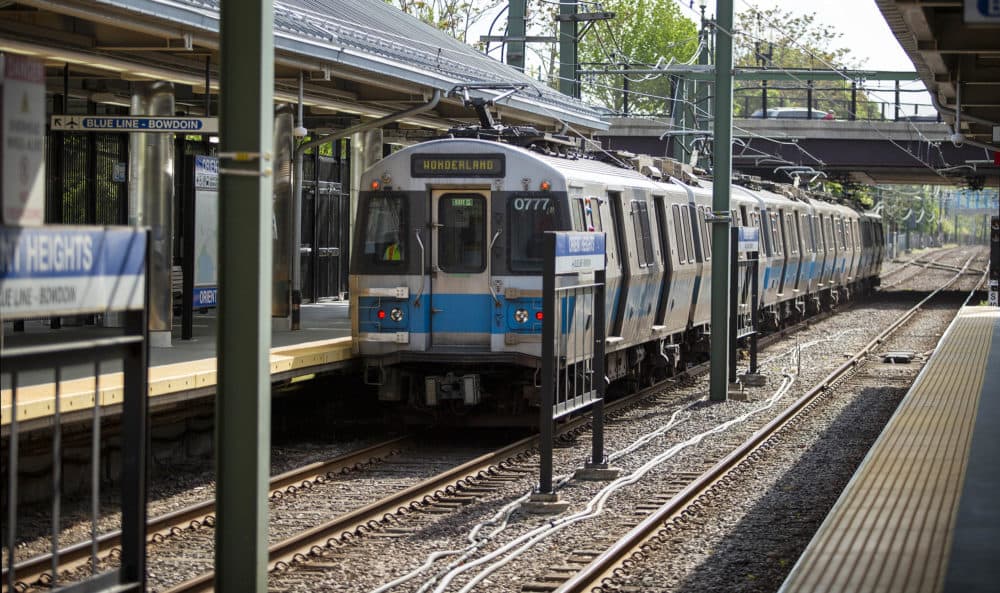Advertisement
Commentary
The MBTA's New Board Should Include The People Who Know It Best — Riders And Workers

The MBTA had its fair share of fiscal and management troubles before the pandemic. But since March 2020, the T’s board and staff, along with the public, have anxiously tracked ridership levels and COVID case numbers among MBTA workers, fearing not only for individuals' health but the fate of the entire system. There is no doubt that workers and riders are central to the MBTA’s purpose and functioning — they deserve a place on the MBTA’s governing board.
The current board, known as the Fiscal and Management Control Board, includes five members, with no formal mechanism to include labor or rider representation. Yet 16 months of the pandemic have made it clearer than ever that workers and riders are central to the MBTA’s purpose and functioning — they are the lifeblood of the system.
Originally established in 2015, the board will sunset at the end of this month — and if no new MBTA board is established, oversight of the Transportation Authority will revert to the Massachusetts department of transportation board. We have seen multiple proposals for what a new board should look like, but to be representative and equitable, the new board must include the people who keep the MBTA going — its riders and workers.
After all, MBTA riders and workers have deep knowledge of the system and know what’s at stake if it fails. But right now, because they lack formal representation, their voices are relegated to “public input” sessions or brief testimony at the beginning of public meetings that are too often ignored.
We are encouraged by the inclusion of a new MBTA board in the supplemental budget currently working its way through the Massachusetts Legislature. House and Senate versions would each create a permanent, seven-member board, including the secretary of transportation, five members appointed by the governor and one appointed by the MBTA advisory board, representing municipalities served by the T. The two versions include slightly different experience qualifications for members, with House and Senate versions expected to be reconciled this week.
[W]orkers and riders are central to the MBTA’s purpose and functioning -- they deserve a place on the MBTA’s governing board.
Both versions also assign a seat to a labor representative chosen from nominations provided by the State AFL-CIO. A worker member can represent the people who operate, maintain and clean our buses, trains, and trolleys, assist riders and carry out a million other tasks that keep the system running.
While we are heartened to see the House and Senate agree on worker representation, it’s equally important to see riders represented fully. Here, the House and Senate diverge.
House language would create a dedicated rider seat filled by anyone who lives in the MBTA area and “uses local service or express service of the authority.” The Senate version fails to reserve a dedicated seat for a rider, but does require that one member appointed by the governor — for other expertise — also be a rider who lives in an environmental justice (EJ) community. The vagueness of the House version defeats its purpose, and the Senate version reduces the importance of EJ rider representation by tacking it on to another, expertise-defined seat.
Advertisement
Workers and riders bear the brunt of chronic MBTA problems ... They will bring new analysis and perspectives to decision-making.
Compromise between the chambers could reflect the best of both versions — a dedicated rider seat truly representing environmental justice communities like those in Chelsea, Roxbury, Chinatown and Dorchester who both depend most on the T, lack equitable access to transportation, and are most impacted by traffic-related air pollution. To do so, the legislature should follow the model provided by the labor seat — a dedicated rider seat chosen from nominations made by community organizations representing environment justice (EJ) communities.
Including worker and EJ rider members on the MBTA board will bring a much-needed perspective and help advance effective solutions to problems at the MBTA that pre-date the pandemic. Workers and riders bear the brunt of chronic MBTA problems, including high fares, lapses in safety, subpar vehicles and facilities, and the long-standing structural deficit that constrains expansion and modernization. They will bring new analysis and perspectives to decision-making. Finally, including workers and riders with real ties to communities of color and working families is an ethical imperative at a time when our nation — and our state — are reckoning with the violent legacies of inequity, exclusion and racism.
By establishing a new MBTA board with an expanded membership, that includes voices from communities at the heart of the MBTA, state legislators have a chance to lay the groundwork for a more equitable, democratic and well-functioning transit system for our region.
The MBTA — and our state — will benefit if they do.
Dwaign Tyndal is the executive director of A.C.E, Alternatives For Community and Environment. Jim Evers is the president of Boston Carmen’s Union, Local 589.